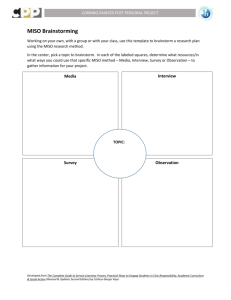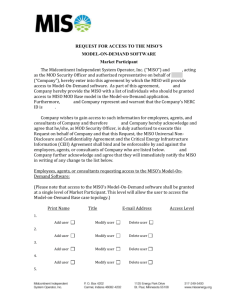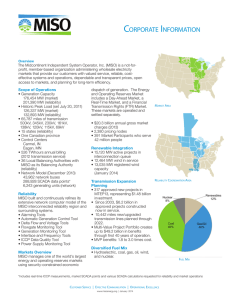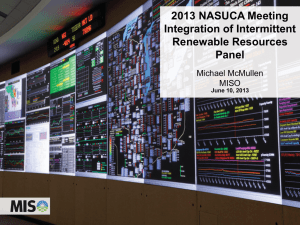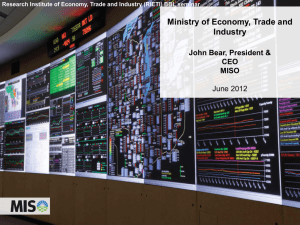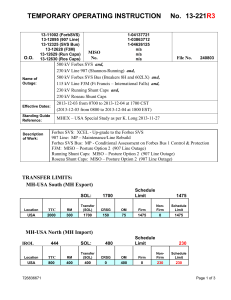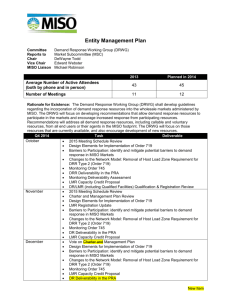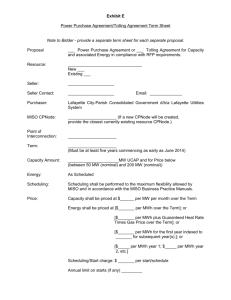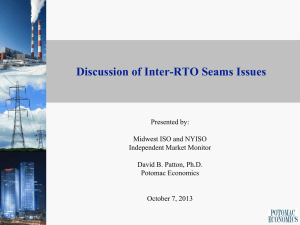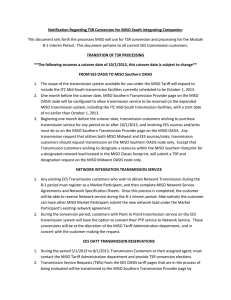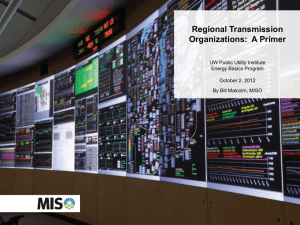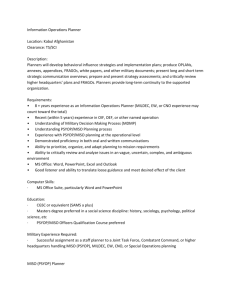Current MISO Issues Presentation
advertisement
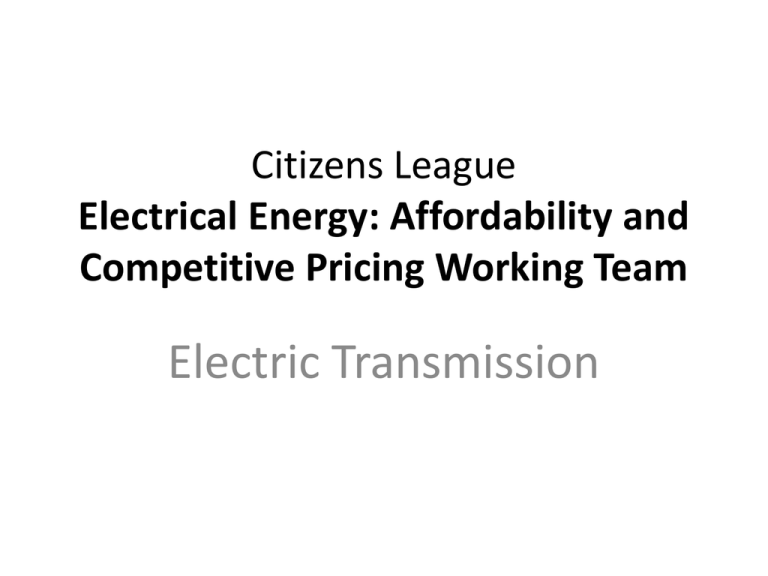
Citizens League Electrical Energy: Affordability and Competitive Pricing Working Team Electric Transmission Why this presenation? • At prior meeting, several transmission or MISO specific questions were brought up • Request was made to learn more about MISO and transmission current events Agenda • Introduce Midwest Independent System Operator - MISO • ransmission and electricity prices • Current transmission topics – Renewable integration – Cost allocation – Generator retirements Disclaimers • I work at MISO. But this presentation represents my own ramblings, and should in no way be construed as an official MISO presentation. • Disclaimer disclaimer. I wrote the above disclaimer. I am not an attorney. I assume no responsibility or liability for any inaccuracies, intended or unintended, contained in the above noted disclaimer. MISO – Plan and Operate the Transmission Grid for most of the Midwest • Oversee the flow of power over the high voltage wholesale transmission system in all or parts of 13 states and the province of Manitoba • Provide independent wholesale transmission system access • Provide Reliability coordination • Operate a day ahead and real time energy market • Manage congestion on the grid • Set reserve margin requirements for load serving entities • Plan Regional transmission expansion • Serve as independent market monitor MISO Fast Facts • Non-profit organization • Voluntary membership • Regulated by the Federal Energy Regulatory Commission (FERC) • $41 billion energy market • 1,896 pricing nodes • Governed by independent eight member board • About 750 employees • Main office in Indianapolis, branch office in St. Paul. 6 MISO, Entergy, PJM and SPP Footprints 7 Real Time Prices – MISO Runs an Energy Market 8 June 2011 Generator Interconnection Queue Map Transmission – the Great Enabler • Like an interstate highway system, transmission can enable access to lower cost electricity • New transmission generally reduces wholesale prices by reducing congestion, improving access to lower cost energy. In aggregate, net benefits increase, but it can create winners and losers • There are other benefits beyond lower production costs • See simplified example on next slide Apples and electricity * • Imagine 2 valleys, separated by a mountain range. The apples on the west side cost $5/bushel, while the apples on the east side cost $10/bushel. • A new highway goes through the mountain, allowing people on the east to buy western apples. The new market price of apples for everyone is $7. • Western growers and eastern consumers are happy. Western consumers and eastern producers, not so much. • Now substitute the word electricity for apples, and transmission for highway. * At this point please refer to disclaimer on slide 3 Costs and Benefits • Of course building that highway or transmission lines is not free • If you spend $50 million dollars to build a transmission line that isn’t needed, you don’t produce net benefits, only costs • MISO engineers conduct detailed studies of transmission costs and benefits in order to justify whether a line should be built, and optimize location, size, etc Current Events • Integrating renewables into the Grid – Transmission expansion – Integration challenges • Cost Allocation (who pays) • Generator retirements (EPA, cheap natural gas, aging plants) and its effect on reliability and prices Transmission Expansion to Integrate Renewable Energy • Most states in the MISO footprint have Renewable Portfolio Standards (RPS’s) requiring a certain percentage of renewable energy • MISO conducted 2 major studies to determine the amount of transmission needed to meet RPS’s. – Regional Generation Outlet Study (RGOS) – Regional 15 year plan to meet state RPS’s - $15 to $20 billion. – Candidate MVP Study - $5 billion. An in progress, more detailed plan to justify the first phase of new transmission projects to meet RPS standards - $5 billion. RGOS Study Candidate MVP Study Integrating Renewables • Renewable Energy Sources (wind, solar) are variable or intermittent • To integrate renewables: – Dispatchable Intermittent Resource (DIR) – Improved Forecasting – Benefits of Scale to Smooth Level of Variation – Energy Storage – Manitoba Hydro Cost Allocation • How to pay for regional transmission? • Traditionally local area paid for local transmission, or shared with immediate neighbor • Hard to make traditional model work for longdistance renewable generation • In response, MISO developed the concept of regional Multi-Value Projects (MVP’s) • Costs of MVP’s shared across entire MISO footprint MISO studies more than just transmission • As Reliability Coordinator, MISO helps ensure the region has adequate supply of electricity • For example, recently, MISO conducted an EPA Regulation Study to determine potential level of generator retirements likely under different EPA regulatory scenarios • Summary – New Federal EPA Regulations will not have a dramatic impact on MISO supply, reliability, or prices
